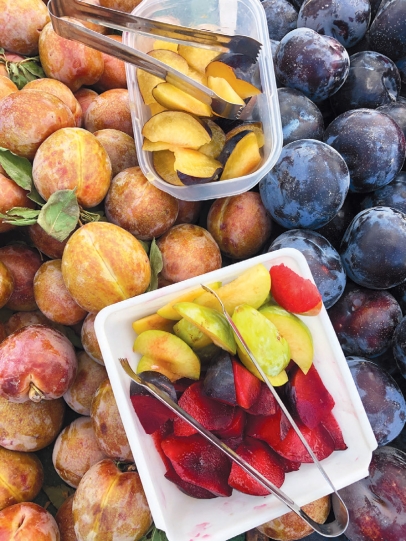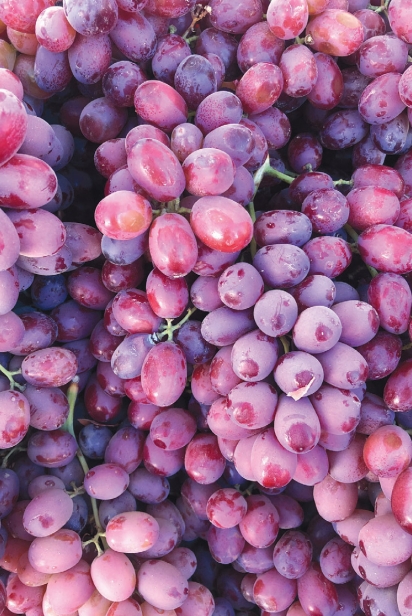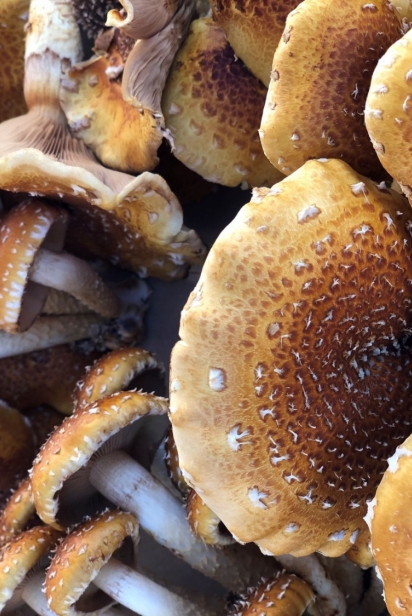Farmers' Markets Save The Day
During COVID Lockdown
I have been visiting and shopping at farmers’ markets for nearly a decade. Perhaps because I find them to be the most magical places, perhaps because of the immense joy that I must exhibit when I am shopping from vendor to vendor, or perhaps both, friends began to call me the “Farmers’ Market Fairy.” My adoration for the farmers’ market and my appreciation for living in a place where I have access to locally grown produce has only strengthened since the start of the pandemic.
In my work as a holistic nutritionist, I noticed a change of focus in my current and prospective clients when the pandemic hit, specifically a desire to implement new practices that will improve and support their immune system immediately, and also be sustainable for long term health.
This realization had me wondering: What have people learned about wellness during the pandemic? And what better place to see what others in the health, wellness and food industry have observed than the farmers’ market?
SHOPPING HABITS
At the Westlake Farmers’ Market, Cathy Feig of Country Fresh Herbs reports an increase in new market shoppers. “Many people began shopping at the farmers’ market for the first time at the start of the pandemic. The market, being outdoors, gave people a chance to be able to be outside—one of the first priorities for many of us in lockdown.”
“Customers felt safer to pick produce themselves,” Feig continues. “Many asked questions such as ‘Where did the produce come from?’ and ‘When was it picked?’ It gave them a sense of comfort to know that their food was coming from a trusted and reliable source. And it made us, as vendors, really thankful.”
Alex Morphew from Neenach Farms says, “The produce you see at a grocery store goes through lengths of travel. We noticed that [new] people who were shopping at the markets began to take note of how fresh the produce at the market really is. And for us farmers, being able to provide our customers with fresh produce adds so much value to our work.”
WHAT WE ARE EATING
When asked if there were produce items that garnered more popularity over the past year, Feig notes an increased interest in leafy greens and tomatoes. “A lot of people began trying kale and using more spinach, for the added immune support. Our antioxidant tomatoes were a huge seller; those went immediately week by week.”
“When that Netflix documentary came out during the pandemic about the benefits of mushrooms, our mushroom sales had a huge surge,” says Morphew. “People were curious about how mushrooms work and support the immune system in a medicinal way.”
Morphew and her partner sell a variety of mushrooms including shiitake, oyster and lion’s mane. Many studies have shown that mushrooms are one of the most powerful immune-boosting foods, said to help support healthy immune response, lower inflammation and improve cell functionality.
Wendi Mitchell from Blue Ridge Honey noticed a nearly 800% increase in their online sales when the pandemic began. Since then, one of their most popular sellers is propolis, a thick mixture made by bees composed of beeswax and extracted material gathered from tree buds, sap flows and other botanical sources. “Someone in the medical community mentioned how powerful propolis is for the immune system, so people became very interested in purchasing it. Propolis is antimicrobial, antibacterial, antifungal and anti-inflammatory,” Mitchell says.
SOCIAL HOUR
Vendors also began to notice that the farmers’ market was becoming a spot for friends to get together and see each other during the lockdowns.
“It was the social event of the week for so many people,” says Feig. “Friends would plan to meet at the market and make a weekly gathering around it. We noticed families coming to the market together, friends shopping for other friends and an increase in communities coming together.”
Based on these conversations, it appears that many people immediately began learning about the powerful effects of food and nutrition for supporting their innate immunity. We can only hope that those lessons learned will continue through the slow transition to a post-pandemic era. Could this be a silver lining of the pandemic?









